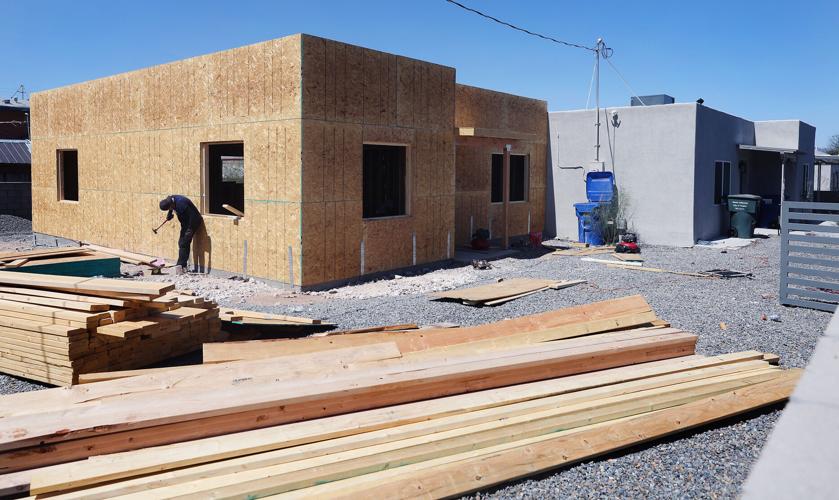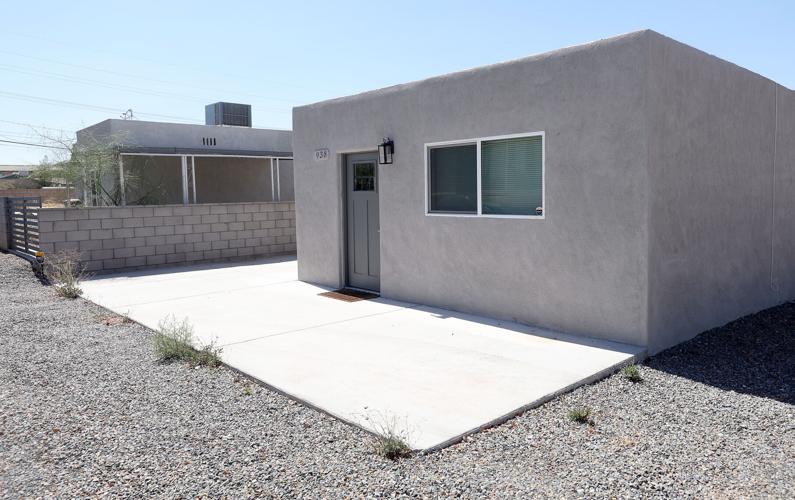ĂŰčÖÖ±˛Ąâ€™s older neighborhoods could soon look very different as the city complies with a new state law that relaxes zoning rules to allow homeowners to build up to four small dwellings — or casitas — on their property.
Or some homeowners may choose to cash in on the new laws by selling their backyards to developers to build and rent the tiny homes.
Under the new state law, ĂŰčÖÖ±˛Ą cities with a population of 75,000 or more must easily allow for the development of duplexes, triplexes, fourplexes and townhomes on all lots zoned for single-family use within one mile of the city’s central business district. In ĂŰčÖÖ±˛Ą, those boundaries are roughly Prince Road on the north, Silverlake Road on the south, Country Club Road on the east and Silverbell Road on the west.
Newer home subdivisions with established homeowner associations in that area are not subject to the new state law.
People are also reading…

While splitting a lot and selling surplus land has always been an option for ĂŰčÖÖ±˛Ą homeowners, a new state law might broaden the appeal to those with big lots who are not interested in becoming landlords.
Known as “middle housing,” city officials say only about 15 percent of housing in ĂŰčÖÖ±˛Ą falls under that definition.
“We do well with single-family homes and big apartment complexes, but not the middle,” Dan Bursuck, planning administrator with ĂŰčÖÖ±˛Ąâ€™s Department, said at a public outreach meeting.
The department has hosted outreach meetings to inform residents of the changes and get feedback.
At a recent meeting, several residents participated and shared their thoughts.
Some asked if the city could limit the development of luxury units and mandate affordable housing. The state law prohibits cities from dictating the type of unit built or mandating affordable housing.
Others asked about parking. The state law requires no more than one off-street parking space per unit.

The city of ĂŰčÖÖ±˛Ą is working to implement a new state law that allows the development of duplexes, triplexes, fourplexes and townhomes — like this one in Jefferson Park — on all lots zoned for single-family use without additional requirements.
And asked why the plan isn’t implemented across ĂŰčÖÖ±˛Ą, officials said they will start with the determined boundaries for now.
While splitting a lot and selling surplus land has always been an option for ĂŰčÖÖ±˛Ą homeowners, the new law might broaden the appeal to those with big lots who are not interested in becoming landlords. That’s because the market makes it easier to sell yard space to developers for such projects.
Among the requirements of the , cities are prohibited from:
— Restricting middle housing to less than two stories
— Setting permitting rules that are more restrictive than for single-family homes
— Requiring owner-occupancy of any structure on the lot
The Pew Charitable Trust commended the state’s actions.
“We applaud this evidence-based approach to ensure that all ĂŰčÖÖ±˛Ąns have access to a variety of housing options,” Alex Horowitz, director of Pew’s housing policy initiative, said in a statement. “Governor Hobbs and the ĂŰčÖÖ±˛Ą Legislature are lowering the barriers to housing access and improving the lives of ĂŰčÖÖ±˛Ąns.”
All affected cities in ĂŰčÖÖ±˛Ą must be ready for compliance by Jan. 1.
If a city does not adopt its personalized regulations by then, middle housing will be allowed on all lots zoned for single-family residential use without any limitations.
The city council is expected to review ĂŰčÖÖ±˛Ąâ€™s regulations this fall.




















